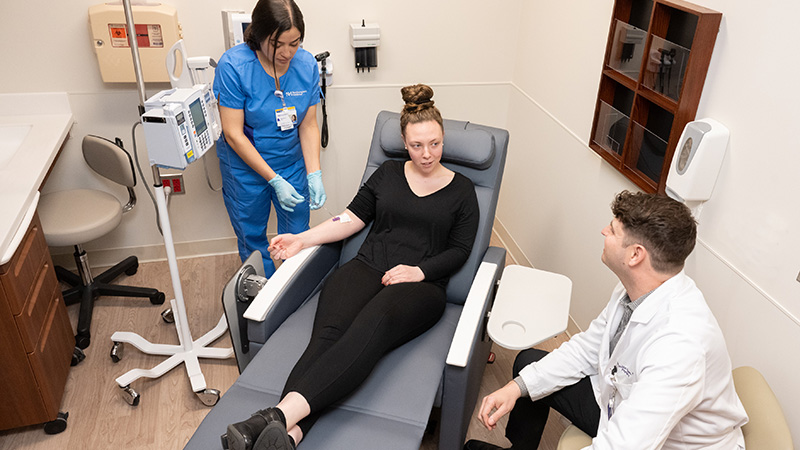Hugs in a Blanket?
Updated October 2023
A Closer Look at Weighted Blankets
The use of a weighted blanket is the same concept as swaddling a baby: In a sense, sleeping with a weighted blanket is like sleeping with a warm hug. While the use of weighted blankets and vests is common for people with autism, manufacturers now are touting weighted blankets as a solution for general anxiety. However, these claims so far have not been supported by science.
“Research and high-quality studies are lacking,” explains Mark E. Neahring, MD, a psychiatrist at Northwestern Medicine.
If you still want to give it a try, Dr. Neahring says you should be cautious. Weighted blankets are not medical devices, and you shouldn’t use one if you have certain medical conditions, such as heart, lung or mobility issues. You should also never use a weighted blanket with a heated blanket.
What to Know Before You Buy
- The general rule of thumb is to choose a blanket that weighs 10 percent of your body weight. So, if you weigh 150 pounds, choose a 15-pound blanket. However, consider adjusting that weight depending on whether you are someone who prefers a light or heavy blanket. Blankets are available up to about 30 pounds, and some blankets also have adjustable weight.
- A variety of blanket fabrics is offered depending on your preferred sleeping temperature. If you are a hot sleeper or a cold sleeper, you can find weighted blankets tailored to you.
- Unlike traditional blankets, a weighted blanket should measure roughly from your chin to your feet. It should not hang over the sides of your bed, as that would decrease the amount of weight on your body.
- Weighted blankets can vary in price from roughly $50 to $300, depending on size, fabric and fill (plastic or glass beads).
If you suffer from anxiety or if you have another medical condition, consult your physician or therapist before trying a weighted blanket. In some cases, Dr. Neahring notes, a weighted blanket may be an option to use in conjunction with other anxiety treatments as directed by your physician or therapist.






